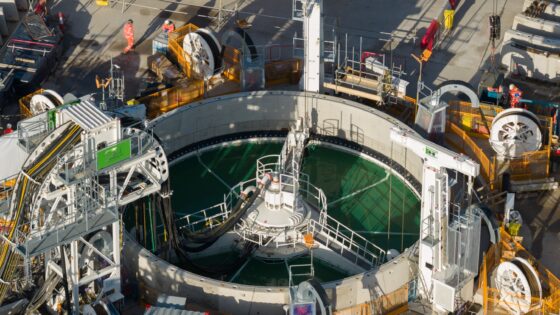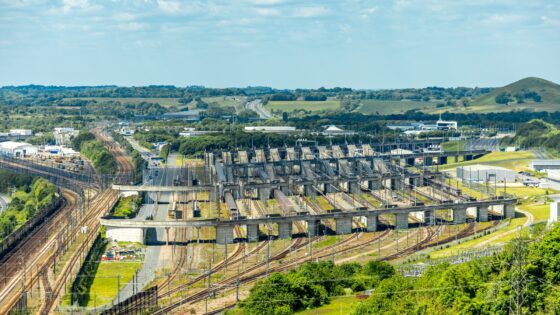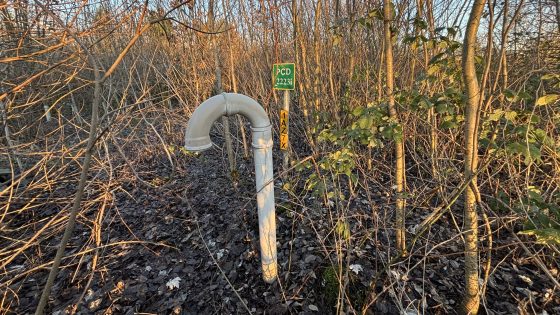Europe’s largest vertical shaft sinking machine: design and risk notes for tunnel engineers
Reviewed by Joe Ashwell

First reported on New Civil Engineer
30 Second Briefing
A 15m-diameter vertical shaft sinking machine, claimed as Europe’s largest of its type, has started excavating at National Grid’s Tilbury site to construct a new cable tunnel beneath the River Thames between Tilbury and Gravesend. The shaft will form the main access and cable route for replacing a 1960s transmission tunnel, enabling modern high-voltage circuits to be installed at greater depth and with improved flood resilience. Contractors will need to manage large excavation volumes, groundwater control and segmental lining tolerances for a very wide, deep vertical shaft in complex Thames alluvium and terrace gravels.
Technical Brief
- Vertical shaft sinking machine operates from surface with prefabricated segments installed immediately, minimising open excavation exposure.
- Machine deployment at Tilbury reduces need for conventional deep cofferdams and extensive temporary works in soft alluvium.
- Segmental lining erection within the VSM shield provides controlled working environment and reduced fall-from-height risk.
- Enclosed excavation and mucking system limits worker time at shaft bottom, lowering exposure to groundwater inflows.
- Mechanised sinking reduces manual hand-mining in mixed Thames deposits, cutting risk from sudden face instability.
- Controlled verticality via guided VSM reduces tolerance exceedances that could otherwise complicate cable installation clearances.
Our Take
Among the 22 Infrastructure stories in our database, very few involve shaft diameters approaching the 15 m scale, signalling that National Grid’s Tilbury works sit at the more complex end of urban utility tunnelling in the UK.
Using a large vertical shaft sinking machine to interface with a 1960s cable tunnel suggests a strategy of life-extension and capacity upgrade rather than full replacement, which typically reduces surface disruption and planning risk for dense Thames-side corridors like Tilbury–Gravesend.
Safety-tagged Infrastructure pieces in our coverage increasingly involve mechanised shaft sinking rather than conventional sinking, implying that National Grid’s approach at Tilbury aligns with a wider move towards reducing man-entry exposure in deep urban shafts.
Prepared by collating external sources, AI-assisted tools, and Geomechanics.io’s proprietary mining database, then reviewed for technical accuracy & edited by our geotechnical team.
Related Articles
Related Industries & Products
Mining
Geotechnical software solutions for mining operations including CMRR analysis, hydrogeological testing, and data management.
Tunnelling
Specialised solutions for tunnelling projects including grout mix design, hydrogeological analysis, and quality control.
CMRR-io
Streamline coal mine roof stability assessments with our cloud-based CMRR software featuring automated calculations, multi-scenario analysis, and collaborative workflows.
QCDB-io
Comprehensive quality control database for manufacturing, tunnelling, and civil construction with UCS testing, PSD analysis, and grout mix design management.
HYDROGEO-io
Comprehensive hydrogeological testing platform for managing, analysing, and reporting on packer tests, lugeon values, and hydraulic conductivity assessments.


